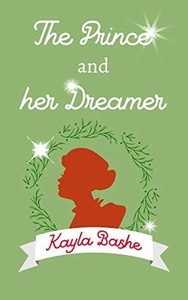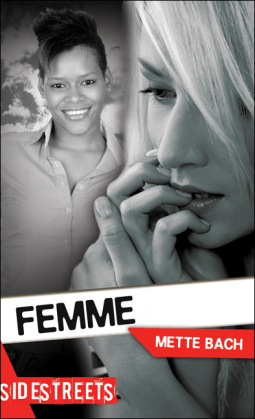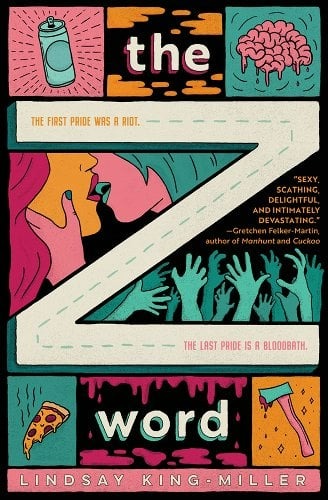
“The Red Prince is like Joan of Arc, if God had been sensible and made her English”
At the end of last year I got interested about the story of the Nutcracker. I knew it was a ballet but I didn’t know it was a story… so naturally I looked up queer retellings. This looked like the most promising one, so it was my first read of the year.
The Prince and Her Dreamer is about Prince ‘Mattie’ Mathilde, who gets injured while fighting the rats. Her best friend and court fae Ross suggests turning her into a doll so she can heal and Mathilde agrees. Fast-forward a few decades and Clara, Ross’ relative from the human world, manages to break the spell through an act of unselfish kindness.
Now, while choosing which retelling to read, as there are a few sapphic retellings of the nutcracker, I read mixed reviews about this book. Many people were saying the book was too short (it’s a novella) and that there was a distinct lack of world-building. This is all true, however, I think it’s because it’s not a plot-driven story but a character-driven one. It assumes that people are already familiar with the story, so if you are not, look up the story first before reading this retelling.
Before we get to the good stuff, let me air out my pet peeves about this story. To me, the story around Mathilde being turned into a doll sounded unconvincing. Like, why must it be someone related to Ross? Is the magic linked to blood? Most importantly, how does a fae have human relatives? Did they used to be part of the same world? Did someone move? Even a character-driven story needs to address plot-holes.
There is also a bit of an age gap. Yes, Mathilde doesn’t age while being a doll, but she was conscious: she had a lot of time to grow and mature as a person during those two decades. Clara is 17… while being mature and headstrong, she’s young. This book, apart from being fantasy, is also historical fiction, as Clara lives during the Victorian era. I am aware that age was a different concept then, but still, this gap was never addressed. In fact, Mathilde thinks of them as about the same age.
Another plot point which was never resolved was the toy soldier. Were they wooden always or had their appearance been altered? I just did not understand.
Clara’s coming out, even though to her ‘uncle’ who she knew would accept her, felt a little fake. The language used was not something I associate with Victorian times, and I’m sure that even with all her self-awareness, it was too quick for her to unpack all her baggage, for her to be comfortable saying those words. In a way, it’s a fairytale, but it still needs to seem realistic.
Now, the things that I did like were, in brief, the characters, their relationship and altering gender-tropes.
Mathilde has a tragic background. She’s young, but she’s leading an army, and suddenly she is not able to do even that. When she comes back, most of the people around her had aged; they moved on without her, and she has both to overcome survivor’s guilt as well as find her place again among all those people who did not expect her to come back.
Clara is trying to please her family while still doing somewhat what she likes. She’s trying to compromise, and at some point, she needs to make a decision. Clara likes to read and likes her ‘uncle’ and the stories he tells her, and even though she’s too old for a doll, she really liked his present. With all her knowledge of the four realms (due to her reading her Uncle’s book over and over), Clara proves to be a great help to Mathilde.
I liked how the two characters, while drawn immediately to each other, take some time to develop a relationship (even in such a short novella). The two characters, because of circumstances, also mature separately before coming back together. I liked very much the fact that in spite of everything, Clara wanted to live life in her own terms, not because of someone else, but because of her will. There was also consent while kissing! So props to the author for that (even though it should be common practice both in reality and in fiction). I’d like to point out that there are no sex scenes in this book.
I also liked the gender-altering elements in this book. The most obvious being the ‘Prince’ title to Mathilde, a girl. The way I saw it was that a Prince was the successor of the King (or an unmarried Royal). I don’t see why in reality there should be any gender distinction to royal (or other) titles. There was also a gender-altering for a minor character, who you expect to be female but is male. That was a nice touch and plays on our assumptions.
In the end, I had mixed feelings about this retelling. There were a lot of plot holes. It felt like starting a book from the ending. We know nothing of the rats apart from what the rat king was made from. We also do not know what happened to the rats towards the end of the book. A few sentences here and there to explain the plot were definitely needed and for use, a longer book was needed. However, there were found family feels, good relationship structures and gender-bending elements.
Give it a try, especially if you already know the story and can fill in the missing information from your previous knowledge or your imagination. It’s also quite short, so you can read it in a break, but hurry up if you’re in the northern hemisphere, as it’s best read while it’s still cold.



